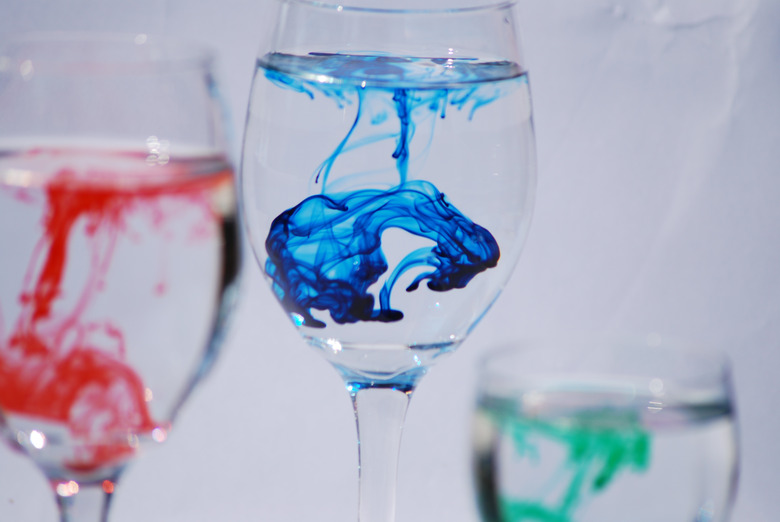Simple Experiments For The Relationship Between Diffusion & Temperature
Diffusion happens when substances move from an area of high concentration to an area of low concentration. When the temperature is higher, it affects the diffusion process because molecules have more energy and move faster. Read on to learn more about diffusion versus temperature with simple experiments.
Experiment 1: Diffusion in a Liquid
Experiment 1: Diffusion in a Liquid
For the first simple experiment, you will need a clear container filled with water, food coloring, a darker color such as red is best, and you will need a watch. To start, add a single drop of coloring to the water's edge in the container and start timing the moment the drop hits the water. Stop timing as soon as the color first reaches the opposite edge of the container. Repeat the procedure after cooling the water in the freezer or heating it up in the microwave or on the stove and compare the results.
Considerations
Make sure that the water stays calm throughout the experiment. For additional variability, you could also use clear liquids other than water, such as vinegar. Use caution when testing other liquids as they may be hazardous, especially when heated or cooled.
Expected Results
At higher temperatures, the water molecules in the container are moving more rapidly, which should cause the food coloring molecules to move more rapidly from one end of the container to the other. The opposite is true when the water is cold.
Experiment 2: Diffusion in a Gas
Experiment 2: Diffusion in a Gas
For the second experiment, you will need a strong-smelling substance and a room connected to an air conditioning system, along with a watch and a second person. Have the other person stand on the opposite side of the room from you and expose the scent to the air. For example, light a candle or spray some air freshener. At the same moment, start timing. When you first detect the scent, stop timing. Next, cool the room down or heat it up using the AC system and repeat the experiment, then compare the results.
Considerations
Try to remove all sources of air flow from the room. Close all windows and turn off all fans, including the AC fan. Exact times will differ between individuals because each person's nervous system reacts to smells at different concentrations. Therefore, exact results will not be the same when performed by a second person.
Expected Results
For the purposes of this experiment, the only real difference between a gas and a liquid is how far apart the molecules are, so the results for the second experiment should be similar to the first. At a higher room temperature, the smell should travel faster than at lower room temperatures.
References
Cite This Article
MLA
Mullis, Robert. "Simple Experiments For The Relationship Between Diffusion & Temperature" sciencing.com, https://www.sciencing.com/simple-experiments-relationship-between-diffusion-temperature-11534/. 30 April 2018.
APA
Mullis, Robert. (2018, April 30). Simple Experiments For The Relationship Between Diffusion & Temperature. sciencing.com. Retrieved from https://www.sciencing.com/simple-experiments-relationship-between-diffusion-temperature-11534/
Chicago
Mullis, Robert. Simple Experiments For The Relationship Between Diffusion & Temperature last modified March 24, 2022. https://www.sciencing.com/simple-experiments-relationship-between-diffusion-temperature-11534/
